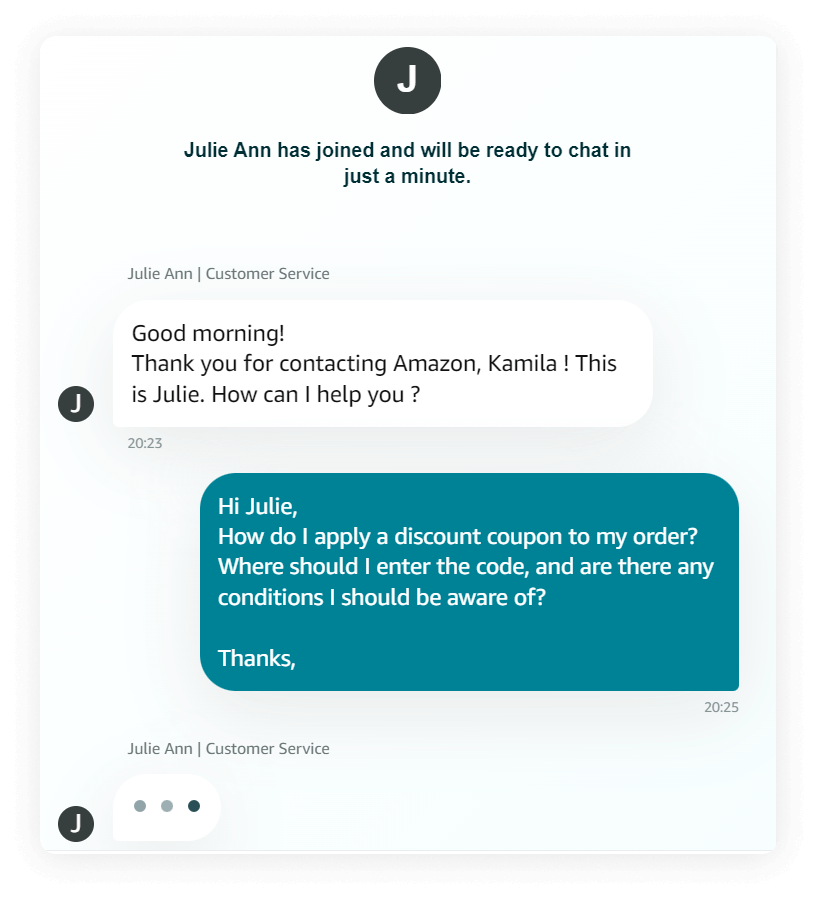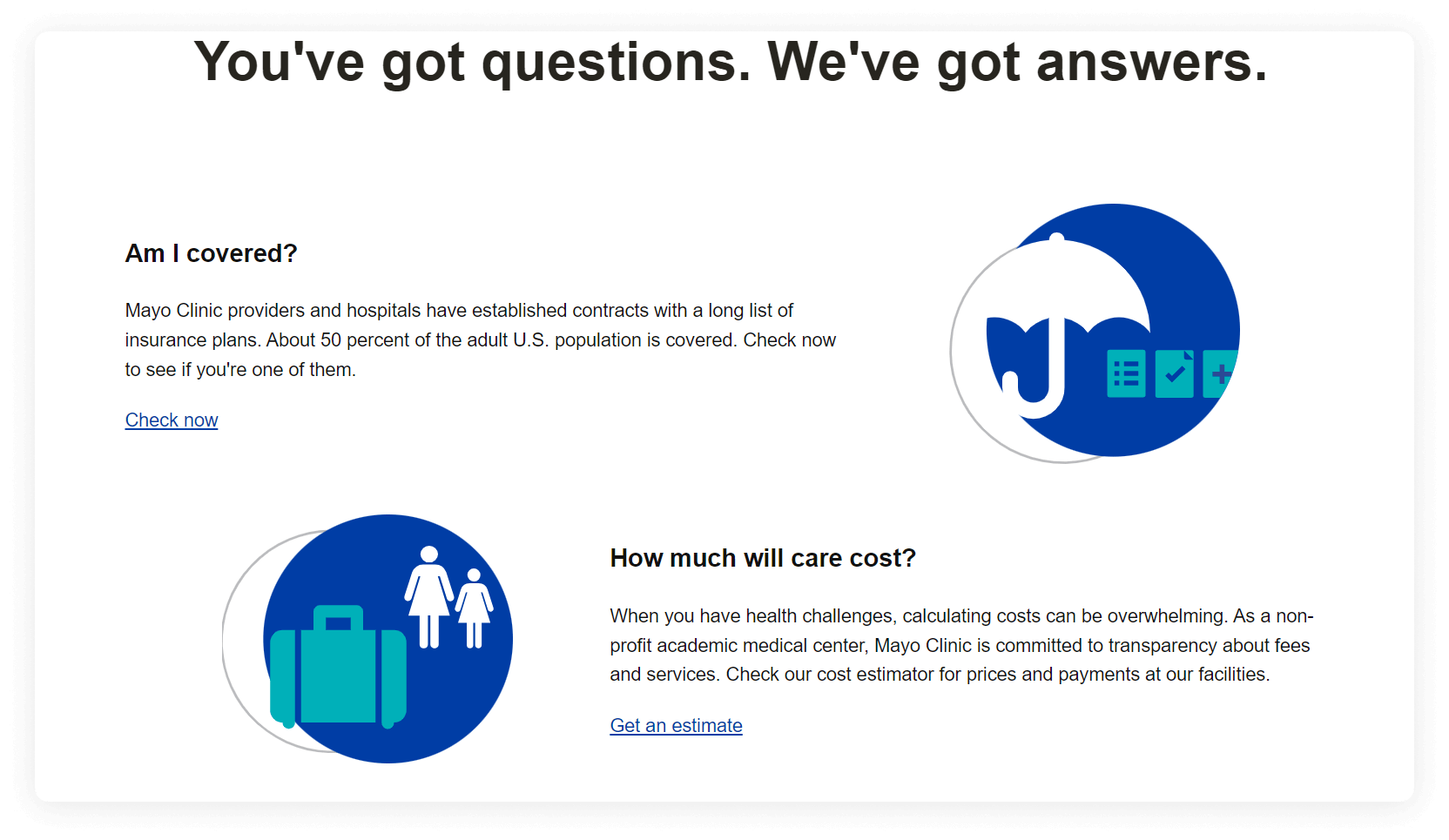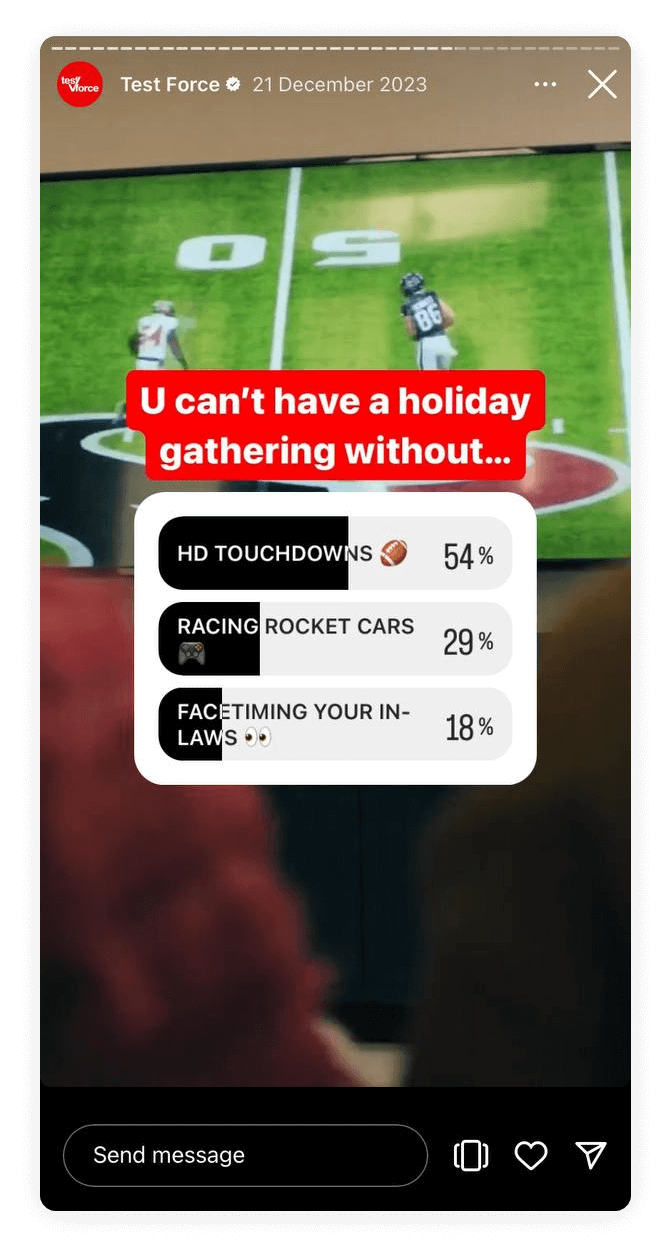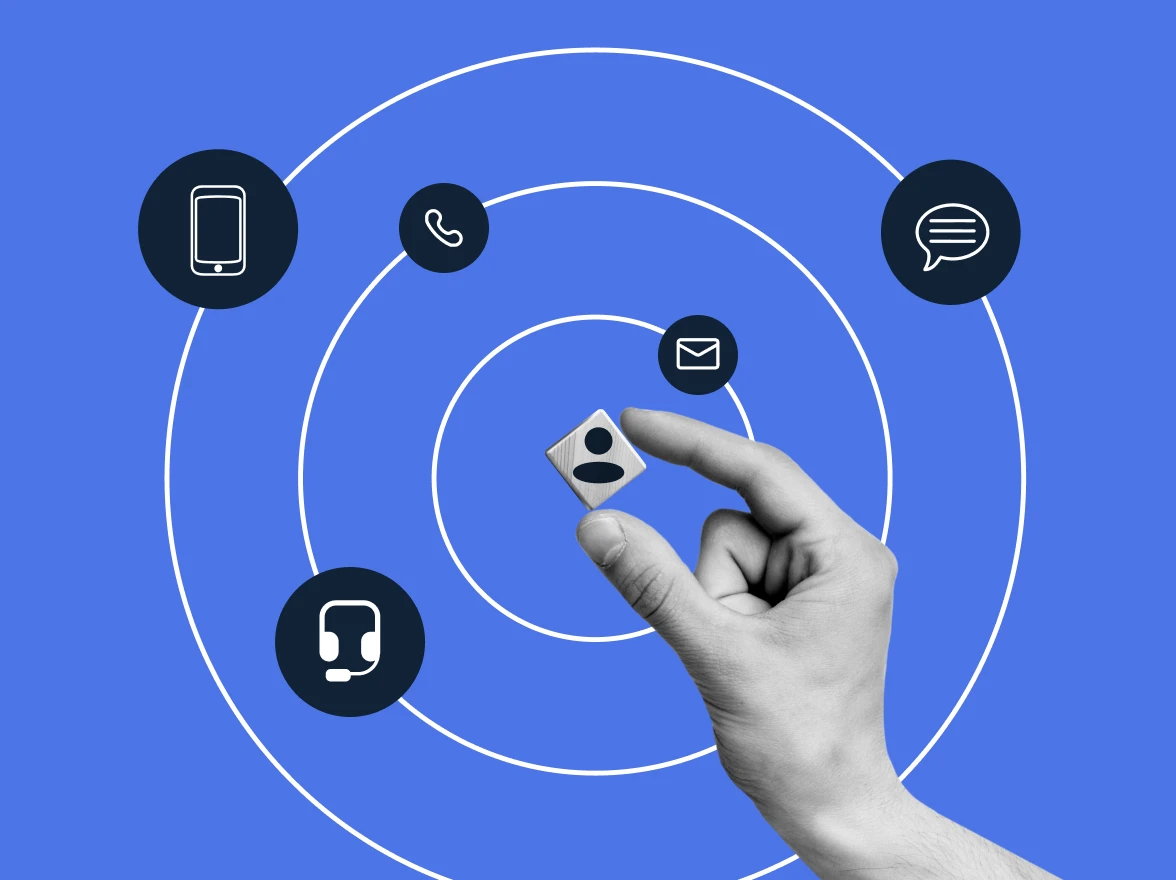Digital customer engagement is essential for businesses to thrive in today’s market. This article explores key strategies to enhance digital interactions, the benefits of implementing these techniques, and real-world examples from leading brands. Additionally, it highlights current trends shaping the future of consumer engagement. By understanding and adopting these practices, businesses can foster stronger relationships, increase loyalty, and drive growth.
- What is digital customer engagement?
- Why is digital customer engagement important?
- How does a digital interaction differ from a traditional one?
- Digital customer engagement examples
- Benefits of digital customer engagement
- Digital customer engagement strategy: key steps
- Common mistakes to avoid
- Evaluating success
- Must-have tools to engage customers digitally
- Digital customer engagement trends in 2024
- How different industries approach digital customer engagement
- Reaching customers in their digital spaces
What is digital customer engagement?
Digital client engagement refers to the interaction between a business and its customers through digital channels. This means communication, service, and support conducted via websites, social media, email, chatbots, and mobile apps, aiming to improve customer experience and foster loyalty.
This form uses digital customer engagement technology to meet customer needs and preferences. It involves personalized communication, timely responses, and proactive support, ensuring a satisfying experience. Businesses analyze customer behavior data to understand their actions and adjust their strategies, strengthening brand communication and driving growth. Effective interaction builds stronger relationships and promotes long-term customer retention.
Why is digital customer engagement important?
Customer engagement in digital marketing is crucial because it addresses significant issues businesses face in the digital age. Customers expect immediate and personalized responses; failing to meet these expectations can lead to dissatisfaction and loss of loyalty. According to a large Adobe Business study conducted from June to August 2023, the customer experience has drastically improved from 2020 to 2023. Key improvements include the ability to adjust preferences quickly and easily (51%), seamless usability of brands’ platforms and apps (50%), and consistent personalization between online and in-store experiences (49%).
It is important to keep tabs on the statistics within your field and within your customers to compare how you are doing next to your competitors.
How does a digital interaction differ from a traditional one?
Digital interactions differ from traditional ones primarily in their immediacy, convenience, and the channels used. These interactions occur through technology-driven platforms, allowing businesses to interact with customers in real time and across various devices. Traditional interactions, on the other hand, often involve face-to-face or telephone communication, which can be more time-consuming and less flexible.
These channels enable businesses to provide instant support, personalized communication, and a smooth user experience, significantly improving customer interactions compared to traditional methods.
Digital customer engagement examples
There are various methods to interact with customers. Here are some digital engagement examples:
- Chatbots: Automated chat systems on websites that provide instant responses to customer inquiries.
- Social media interactions: Engaging with customers through comments, messages, and posts on platforms such as Facebook, Twitter, and Instagram.
- Email marketing: Sending personalized emails to customers based on their preferences and behaviors.
- Mobile apps: Offering features such as order tracking, personalized recommendations, and exclusive offers through company apps.
- SMS notifications: Providing updates and promotions via text messages.
- Video calls: Conducting customer support and consultations through video conferencing tools.
- Online communities: Creating forums or community pages where customers can interact, share feedback, and get support.
- Webinars and live streams: Hosting educational webinars and live streams to interact with customers, answer questions, and provide valuable content in real-time.
- Loyalty programs: Implementing digital loyalty programs that reward customers for their purchases and interactions, encouraging repeat business and interest.
- Surveys and feedback forms: Collecting customer opinions through online surveys and feedback forms to gain insights and improve services based on their input.
These methods show how to engage customers digitally so businesses can maintain continuous and interactive relationships with their customers.
Benefits of digital customer engagement
Increased customer retention
Engaging customers through digital channels helps build stronger relationships and trust. Consistent interaction and personalized communication make customers feel valued, which in turn increases their likelihood of remaining loyal to the brand over time.
Data-driven decisions
Customer engagement in a digital world provides information on customer preferences and behaviors. Businesses can analyze this data to gain insights into customer needs, enabling them to adjust their products, services, and marketing strategies more effectively.
Lower communication costs
Digital channels are often more economical than traditional methods. Using email, social media, and chatbots can significantly reduce the cost of customer support and marketing while reaching a broader audience.
Better customer experience
Digital engagement allows for a more interactive and personalized customer experience. Features such as personalized recommendations, real-time support, and user-friendly mobile apps contribute to a more satisfying and engaging customer journey.
Competitive edge
In a digital world, businesses that actively engage with their customers online stand out from their competitors. Digital customer engagement tactics can help a business differentiate itself, attract more customers, and ultimately drive growth.
Increased brand advocacy
Satisfied customers are more likely to become brand advocates. By providing excellent engagement, businesses can encourage customers to share their positive experiences on social media and other platforms, increasing brand visibility and reputation.
Enhanced innovation
Getting customers excited allows businesses to gather direct feedback from customers, fostering an environment of continuous improvement and innovation. This feedback can be crucial in developing new products and services that better meet customer needs.
Global reach
Digital channels enable businesses to reach customers across the globe. This expands the potential customer base and opens up new markets, helping businesses grow beyond their local regions.
Digital customer engagement strategy: key steps
Building a successful digital customer engagement strategy involves several key steps. Each step is crucial for ensuring that your business can effectively interact with and retain customers through digital channels.
1. Understand your customer
The first step in building a successful online customer engagement strategy is understanding your customers. This involves gathering data on their preferences, behaviors, and needs. Use tools such as surveys, customer feedback, and data analytics to gain insights into what your customers want and how they interact with your brand. Understanding your customer is essential for creating personalized and relevant interactions that resonate with them.
2. Define clear objectives
Once you have a deep understanding of your customers, the next step is to define clear objectives for your digital engagement strategy. These objectives should align with your overall business goals and be specific, measurable, achievable, relevant, and time-bound (SMART). Common objectives include increasing customer satisfaction, improving retention rates, and driving sales through personalized marketing campaigns. Clear objectives provide direction and help measure the success of your strategy.
3. Choose the right channels
Analyze your customer demographics, the platforms they frequent, and how they interact with your brand. Align your choice of channels with your business goals. For example, if your objective is to build a community, social media platforms might be more effective. For direct and personalized engagement, email or SMS might be preferable.
Consider the nature of your content and the type of interaction you aim to achieve. There are various examples of digital customer engagement channel types, choosing the right ones might require extra planning. For instance, when it comes to real-time support, calls, live chat or chat bots could be beneficial, while for detailed explanations or visual content, video calls or webinars might be more suitable.
4. Create engaging content
Content is at the heart of any digital engagement strategy. Create content that is not only informative and relevant but also engaging and interactive. This can include blog posts, videos, infographics, social media updates, and personalized emails. Use storytelling techniques to make your content more compelling and encourage customers to interact with your brand. Regularly update your content to keep it fresh and aligned with current trends and customer interests.
5. Implement and optimize
The final step is to implement your digital customer engagement strategy and continuously optimize it based on performance data. Use analytics tools to track key metrics such as involvement rates, conversion rates, and customer feedback. Identify what works well and what needs improvement. Regularly review your strategy and make adjustments to ensure it remains effective and aligned with your objectives. Optimization is an ongoing process that helps you stay responsive to changing customer needs and market conditions.
Common mistakes to avoid
1. Not adapting to changes
The digital landscape is constantly evolving, and businesses that fail to adapt to new trends and technologies risk falling behind. Sticking to outdated strategies can hinder your ability to interact with customers.
Stay informed about the latest digital trends and technologies. Be willing to experiment with new tools and strategies to keep your customer engagement efforts fresh and relevant. MightyCall is designed to evolve with the digital landscape, providing you with the flexibility to adapt and stay ahead.
2. Overlooking the importance of personalization
Many businesses fail to personalize their interactions with customers. Generic messages and offers can make customers feel undervalued and less likely to interact with your brand. Personalization is key to creating meaningful connections and improving customer satisfaction.
Use data analytics to understand your customers’ preferences and behaviors. Tailor your communications and offers to meet their specific needs and interests. MightyCall can help you use customer data to create personalized digital marketing campaigns and interactions, improving the overall customer experience.
3. Inconsistent multichannel communication
Inconsistent messaging across different channels can confuse customers and weaken your brand image. Customers expect a smooth experience, whether they interact with your brand via social media, email, or your website.
Ensure that your messaging is consistent across all channels. Develop a unified digital customer engagement strategy that aligns with your brand values and messaging. MightyCall offers tools that help you manage and synchronize communications across multiple channels, ensuring a cohesive customer experience.
4. Failing to measure and analyze results
Without proper measurement and analysis, it’s impossible to know whether your strategy is effective. Many businesses implement strategies without tracking key performance indicators (KPIs), leading to wasted resources and missed opportunities for optimization.
Set clear KPIs and regularly monitor your digital engagement progress. Use analytics tools to track involvement rates, conversion rates, and customer satisfaction. Adjust your strategy based on the data to continuously improve your results. MightyCall provides analytics features that can help you track and measure the success of your efforts.
5. Over-automation
While automation can save time and resources, over-reliance on automated systems can make customer interactions feel impersonal. Customers still value human interaction and may become frustrated if they cannot easily reach a real person when needed.
Balance automation with human touchpoints. Use automation for routine tasks and initial customer interactions, but ensure that customers can quickly escalate to human support when necessary. MightyCall allows integration of automated and human support, ensuring a balanced approach.
6. Neglecting mobile users
Many businesses fail to optimize their digital engagement solutions for mobile users. Given the increasing use of mobile devices, a poor mobile experience can alienate a large segment of your audience.
Ensure that all digital channels and content are mobile-friendly. Optimize your website, emails, and apps for mobile devices to provide a positive experience for mobile users.
Evaluating success
Measuring the success of your strategy involves several steps:
- Set clear objectives: Define what success looks like by setting specific, measurable goals such as increased customer satisfaction, higher customer engagement rates, or improved conversion rates.
- Identify key metrics: Choose relevant metrics to track, such as customer retention rates, net promoter score (NPS), click-through rates (CTR), and average response times.
- Use analytics tools: Employ analytics tools to gather data on customer interactions across different channels. Platforms like Google Analytics, social media insights, and CRM systems can provide valuable information on customer engagement.
- Analyze data: Regularly review the collected data to identify trends, strengths, and areas for improvement. Look for patterns that indicate whether your objectives are being met.
- Adjust strategy: Based on your analysis, make the necessary adjustments to your strategy. This may involve refining your messaging, exploring new channels, or improving customer service processes.
Must-have tools to engage customers digitally
Engaging customers digitally requires a variety of tools that cater to different aspects of the customer journey. Here are some essential tools to consider:
Virtual phone system
MightyCall is a customer engagement software and a virtual phone system designed for small businesses that need a flexible and efficient way to manage customer communications. It provides features such as call forwarding, voicemail, and virtual receptionists, ensuring that you never miss a customer call. With MightyCall, you can manage calls from anywhere, making it easier to stay connected with your customers and provide excellent service.
Customer feedback collection
Gathering customer feedback is crucial for understanding their needs and improving your services. These tools can include online survey services, review platforms, and social media comment monitoring, providing insights into customer satisfaction and areas for improvement.
Personalized email marketing
Personalized email marketing is a powerful way to get customers to interact. Mailchimp offers email marketing features that allow you to segment your audience, personalize messages, and automate email campaigns. By targeting specific customer segments with relevant content, you can improve open rates and drive conversions.
Social media management
Managing your social media presence is essential for engaging with customers and building brand awareness. Hootsuite is a social media management tool that allows you to monitor social media conversations, schedule posts, and analyze performance across multiple platforms. This helps you stay connected with your audience and respond to their needs in real-time. Discover more about Hootsuite.
Live chat and chatbots
Offering real-time support through live chat and chatbots can significantly enhance customer interactions. Intercom provides live chat and chatbot solutions that help you interact with customers instantly, answer their questions, and guide them through their purchase journey. This immediate assistance can improve digital customer engagement and reduce cart abandonment rates.
Analytics and reporting
To measure the success of your efforts, it’s essential to track and analyze data. Google Analytics is a powerful tool that provides insights into website traffic, user behavior, and conversion rates. By understanding how customers interact with your site, you can make data-driven decisions to improve your digital strategy.
Digital customer engagement trends in 2024
As we move into 2024, digital consumer engagement continues to evolve, driven by advancements in technology and shifting consumer expectations. Here are some key trends shaping the landscape:
AI-powered personalization
Artificial intelligence (AI) is transforming digital customer engagement by enabling hyper-personalization. AI algorithms analyze customer data to deliver tailored experiences in real-time. From personalized product recommendations to customized marketing messages, AI helps businesses involve customers on a more individual level. Companies like Amazon and Netflix have long leveraged AI to personalize user experiences, and this trend is expected to become more widespread across industries in 2024.
Omnichannel engagement
Customers today interact with brands through multiple channels, including social media, email, mobile apps, and websites. Omnichannel interactions ensure a consistent and integrated customer experience across all touchpoints. Businesses are increasingly adopting omnichannel strategies to provide smooth transitions between channels, allowing customers to start an interaction on one digital customer engagement platform and continue it on another without any disruption. For instance, a customer might start a chat on a website and later switch to a mobile app without losing the conversation’s context.
Video customer support
Video is becoming an essential tool for customer support. Live video chat allows customers to have real-time, face-to-face interactions with support agents, making the digital customer engagement experience more personal and effective. Additionally, video tutorials and how-to guides are gaining popularity as they can visually demonstrate solutions to common problems. Companies like Zappos and Apple have already started incorporating video into their customer support offerings, setting a trend for others to follow.
Social commerce
Social media platforms are increasingly becoming integral to the shopping experience. Social commerce involves selling products directly through social media channels like Instagram, Facebook, and TikTok. These platforms offer digital customer engagement features such as shoppable posts and live streaming with buy-now options, making it easier for customers to purchase products without leaving the app. As more consumers spend time on social media, businesses are using these platforms to involve customers and drive sales.
Ethical and transparent engagement
Consumers are becoming more conscious of how their data is used and are demanding greater transparency and ethical practices from businesses. Companies are responding by being more transparent about their data collection and usage policies and ensuring they are compliant with regulations such as GDPR and CCPA. This trend is fostering trust and loyalty, as customers prefer to be involved with brands that respect their privacy and operate ethically.
How different industries approach digital customer engagement
Retail: Amazon
Amazon uses various strategies, including personalized recommendations, AI-powered chatbots, and real-time customer support. These strategies help Amazon deliver a tailored shopping experience and promptly resolve customer issues. This information is corroborated by sources such as AWS and Amazon Ads, which detail Amazon’s use of AI and digital tools to enhance digital-first customer engagement.

Healthcare: Mayo Clinic
Mayo Clinic uses digital user engagement tools such as patient portals and mobile apps to improve patient interactions and healthcare delivery. These tools provide patients with access to medical records, appointment scheduling, and telehealth services. Mayo Clinic’s digital initiatives are detailed on their official website.

Finance: Bank of America
Bank of America uses digital channels to provide comprehensive financial services. Their mobile app and online platform facilitate account management, fund transfers, and bill payments. The AI-driven virtual assistant, Erica, enhances user experience by providing personalized financial advice.
Telecommunications: Verizon
Verizon employs strategies such as live chat, chatbots, and social media interactions to provide customer support and service. These strategies are designed to address customer inquiries in time and maintain strong communication channels.

Education: Coursera
Coursera engages learners through a robust digital platform offering online courses and personalized recommendations. Interactive elements like quizzes, peer reviews, and discussion forums enhance the learning experience. Coursera’s strategies are detailed on their official website.
Reaching customers in their digital spaces
By gathering and analyzing customer feedback, personalizing interactions, ensuring consistent multichannel communication, and continuously optimizing strategies, businesses can significantly improve their customer interaction efforts. Consider integrating MightyCall to help implement these strategies and create meaningful, lasting connections with your customers across various digital platforms.






























